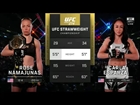Ask the Fight Doc: Thoughts on new concussion research from Toronto
- from MMA Junkie on Mar 31, 2014
- 81 views
- Comment
In the March 2014 edition of the American Journal of Sports Medicine, concussion researchers Michael Hutchinson, PhD, and his colleagues at the University of Toronto’s Macintosh Sports Medicine Clinic published some very interesting research regarding knockouts and TKOs in elite MMA.
These concussion experts reviewed video from 844 UFC bouts between 2006 and 2012, then used statistical methods (regression analysis) which helped them draw certain conclusions and make specific recommendations.
I applaud their serious efforts and believe that their work can and should broaden and further the conversation regarding enhanced fighter safety in combat sports.
As is commonly said in the medical research arena: The best research creates more questions than it answers.
In an attempt to distill the information contained in this important scholarly article with as little bias as I can muster, I’ll present their observations, conclusions and suggestions:
Observations
- Roughly one-third of 844 UFC bouts reviewed (2006-20012) ended in knockout or TKO.
- For knockouts, the average time to stoppage after the responsible blow was 3.5 seconds with the vanquished fighter receiving on average 2.6 additional blows before the referee halted the contest.
- For TKOs, 30 seconds prior to the referee halting the action, the vanquished fighter received on average 17 blows to the head.
- Positive risk factors for knockout/TKO: older age and previous history of knockout/TKO.
Conclusions
- From a mild traumatic brain injury perspective (mTBI), participation in MMA is more dangerous than professional boxing, professional football and professional hockey.
- Researchers: “Expect to see high rates of traumatic brain injuries at more junior levels of amateur competition.”
Suggestions
- MMA institutes a 10-second count after knockdowns similar to what is currently used in professional boxing.
- Greater referee training regarding concussion signs and proper intervention in bouts.
- “Ban” youth MMA.
Now for my two cents.
Although I have a tremendous amount of respect for my University of Toronto colleagues, I respectfully disagree with some of their conclusions and suggestions.
I find their observations regarding older fighters and knockout/TKO history being significant risk factors extremely interesting. Also, 17 blows to the head, on average, before a TKO being called seems like a lot of punishment when you put it on paper!
Unfortunately, like me (in my earlier days) they took the bait and stepped into the pointless “Which is more dangerous?” debate. It reminds me of the thin vs. thick crust or Pat’s vs. Geno’s cheesesteaks debates.
The far more important and medically relevant question that unfortunately went unaddressed is, are combat sports following current concussion management guidelines and protocols, and the latest research regarding enhanced player safety? The clear answer is, not even close!
Their basic conclusion that MMA is more dangerous than these other contact sports does not consider the importance of the accumulation of damage over time due to sub-concussive blows. Research clearly suggests that far more important than the highlight-reel stoppages, it’s the hundreds or thousands of routine head strikes that do the real damage over time. Therefore, drawing your conclusion from accumulation of head strikes over time is far more likely to be predictive and useful than mere stoppages.
I believe that 10-second counts potentially subject an injured athlete to additional unnecessary head trauma. If a fighter is so injured that he needs 10 seconds to shake it off or gain his composure, the fight should be stopped.
The NFL experience shows that it takes a sideline concussion expert roughly seven to nine minutes to properly evaluate a potentially concussed athlete. Therefore, a 10-second count/assessment/evaluation is meaningless and probably dangerous.
Greater referee training regarding concussions is a must!
The more I learn about mTBI, the more I believe that sustaining repeated blows to the developing brain (specifically kids younger than 14) regardless of the activity or sport (tackle football, soccer headers, girls lacrosse without helmets, amateur boxing, full-contact martial arts, etc.) is not a good idea.
This paper is a good step to further the conversation and encourage stakeholders in combat sports to aggressively address the mTBI elephant in the room.
Dr. Johnny Benjamin is MMAjunkie.com’s medical columnist and consultant and a noted combat-sports specialist. He is also a member of the Association of Boxing Commissions’ MMA Medical Subcommittee. Dr. Benjamin writes an “Ask the Doc” column approximately every two weeks for MMAjunkie.com. To submit a question for a future column, email him at askthedoc [AT] mmajunkie.com, or share your questions and thoughts in the comments section below. You can find Dr. Benjamin online at www.drjohnnybenjamin.com, and you can read his other sports-related articles at blog.drjohnnybenjamin.com.
view original article >>Comments
Search for:
- UFC News
- TUF News
- Bellator News
- WSOF News
- Invicta FC News
- ONE FC News
- Boxing News
- Kickboxing News
- Glory News
- EBI News





























